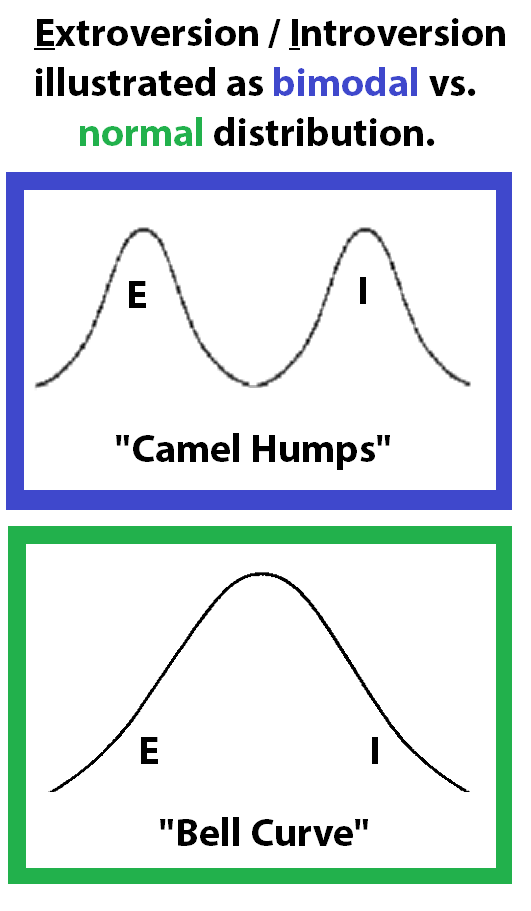Olm the Water King
across the universe
- Joined
- Aug 12, 2014
- Messages
- 1,455
- MBTI Type
- INFP
- Enneagram
- 459
- Instinctual Variant
- sx/so
The Myers-Briggs Personality Test

Discuss.
From the perspective of statistical analysis, the MBTI's fundamental premise is flawed. According to Myers & Briggs, each person is either an introvert or an extravert. Within each group we would expect to see a bell curve showing the distribution of extraversion within the extraverts group, and introversion within the introverts. If the MBTI approach is valid, we should expect to see two separate bell curves along the introversion/extraversion spectrum, making it valid for Myers & Briggs to decide there are two groups into which people fit. But data have shown that people do not clump into two separately identifiable curves; they clump into a single bell curve, with extreme introverts and extreme extraverts forming the long tails of the curve, and most people gathered somewhere in the middle. Jung himself said "There is no such thing as a pure extravert or a pure introvert. Such a man would be in the lunatic asylum." This does not support the MBTI assumption that people naturally separate into two groups. MBTI takes a knife and cuts the bell curve right down the center, through the meatiest part, and right through most people's horizontal error bars. Moreover, this forced error is compounded four times, with each of the four dichotomies. This statistical fumble helps to explain why so many people score differently when retaking the test: There is no truly correct score for most people, and no perfect fit for anyone.

Discuss.

 I was just complaining about how the whole E/I thing always seems a bit nebulous to me with most people yesterday!
I was just complaining about how the whole E/I thing always seems a bit nebulous to me with most people yesterday!

